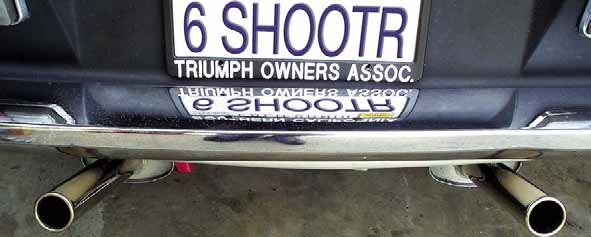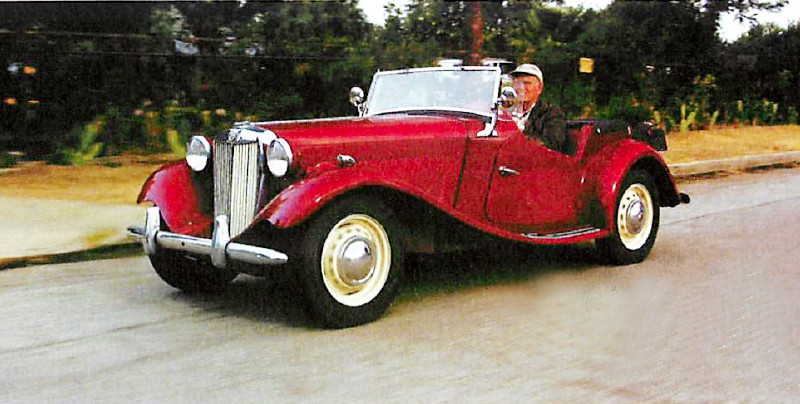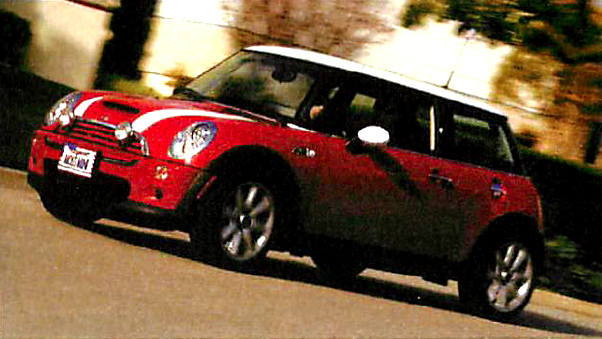Moss Motors makes it easier for TRs to blow smoke
By Rob Mullner
A few of life’s important decisions—like selecting a fine wine in a restaurant—are based purely on hearsay and good intentions. Selecting a replacement exhaust system for your car is different. If you have an out-of-production orphan like my beloved 1973 Triumph TR6, you’re pretty much on your own when choosing a new exhaust.
I’m not one of those “it has to be stock” guys. As my original “2 in, 2 out” exhaust system began to rust away, I turned to the gurus in my club, the Southern California Triumph Owners Association, to get some opinions. The most common response was, “What’s wrong with stock?” followed by, “Those sport systems are just too loud.” But I conjectured that a better solution might be available 30-odd years after an Ian or Nigel jigged up the stock system.
Fatefully, I stumbled onto a beautiful saffron TR6 in a parking lot. I noticed its unique twin exhaust setup. The owner walked up, and I asked if he could fire it up. The straight-six lit up immediately and settled into a very nice idle, right about 850 or 900 rpm. It sounded almost Italian. He gave it some blips on the way to 3,000 rpm, and the sound was reminiscent of a Big Healey. I was officially smitten. I asked where he got the system, and it turned out to be a Moss Motors Sport Exhaust.
I ordered a Sport System the next day and it showed up the following day. I unwrapped and assembled the system on the living room floor (much to my wife’s chagrin). It looked straightforward to install. I ended up being both right and wrong about that.
Installation
I set aside a Saturday to install the new Sport Exhaust. I drove the car around (loudly) to heat up and expand the old exhaust, then organized my Moss exhaust mounting kit, tools, gloves, goggles, and penetrating spray. After securing the car on jack stands and letting the exhaust manifold cool a bit, I hit the head pipe flange with a big dose of penetrant. The four brass nuts, lock washers, and the packing gasket came off in about 20 minutes. Unfortunately, the aftermarket muffler had been MacGyvered into place and requires a professional muffler service that can provide muffler repair services.
Next, I prepped the exhaust manifold for a new gasket between the head pipe and manifold. My wire-brushing session revealed a crack in the exhaust manifold! I had three options: have the crack repaired, find a good used manifold, or upgrade to a Moss header. I chose the header because it’s lighter than the stock manifold (and should produce a little more horsepower) and installs easily on the stock cylinder head.
The Sport System is designed to work with either the stock exhaust manifold or the Moss header. If you stay stock, make sure to replace the exhaust flange gasket between the system’s head pipe and your exhaust manifold, and also use fresh lock washers. Most terrible-sounding TRs have a blown exhaust flange gasket, and keeping the four brass nuts tight ensures that the gasket won’t fail in the first place.
The remainder of the Sport System installation is straightforward and follows most of the stock exhaust’s routing path. The intermediate pipes slip-fit into the ends of the head pipe and are secured with the kit’s clamps. From there, the intermediates use the same type of bracketry to keep the pipes from rattling against each other and the chassis. The secondary pipes continue through the center section of the chassis gusset, past the differential, and splits off to the handsome dual mufflers.
Two more clamps from the kit go on each end of the secondary pipes. Coating each pipe joint with anti-seize makes the fitting process easier. The piece of the puzzle was hanging the mufflers. A distress call to Walt at Britalia in Fullerton, California was all I needed to get it right.
Triumphant Exhaust
So, how does it look and sound? I think it looks classic and modern at the same time. The twin-oval style is reminiscent of newer cars on the road—take a look at a Jaguar XK8.
As for the sound, for the first 500 miles it was loud enough that I used earplugs on longer trips. As exhaust gases seasoned the system, I noticed the sound mellowed and the harsh tones subsided. I took my Triumph on the 1,000-mile Iron Bottom Tour last year and got approving nods from many participants. Some even asked if I had a V8 under the hood. Coming from enthusiasts sporting immaculate cars like an AC Ace, Lotus Cortina, and a perfect Porsche 356, I took it as a real compliment. (Moss Sport Exhaust and headers applications are available for many other British sportscars.)
- Here’s the stock system.
- Compare to the Sport System’s layout.
- While wire-brushing the exhaust manifold in preparation for the Sport Exhaust, a crack was exposed (arrow).
- A Moss header was chosen to replace the cracked exhaust manifold. It’s lighter than the stock manifold and installs easily.
- The Sport Exhaust System fits both the stock exhaust manifold and Moss header. Because exhaust leaks rend to occur upstream, be sure to use a new exhaust flange gasket and new lock washers.
- Four brass nuts secure the head pipe to the manifold flange or header. Keeping the nuts tight eliminates obnoxious exhaust leaks.
- The new head pipe bolts to the manifold or header with the aforementioned flange gasket in place (not shown).
- The remainder of the system uses most of the path of the stock exhaust. Intermediate and secondary pipes split off to the two stainless-steel 18” mufflers. The system is backed by a lifetime guarantee against corrosion.
- From the front, the frame legs flank the pipes.
- Britalia fabricated a muffler mount that hangs from the trunk floor with a single penetration and is reinforced and isolated on both sides of the trunk sheetmetal to prevent any stretching or tearing. The muffler’s ear is suspended with a thick rubber strap and is solidly located so the system won’t buzz or vibrate.

















'Sport Exhaust Upgrade' has no comments
Be the first to comment this post!